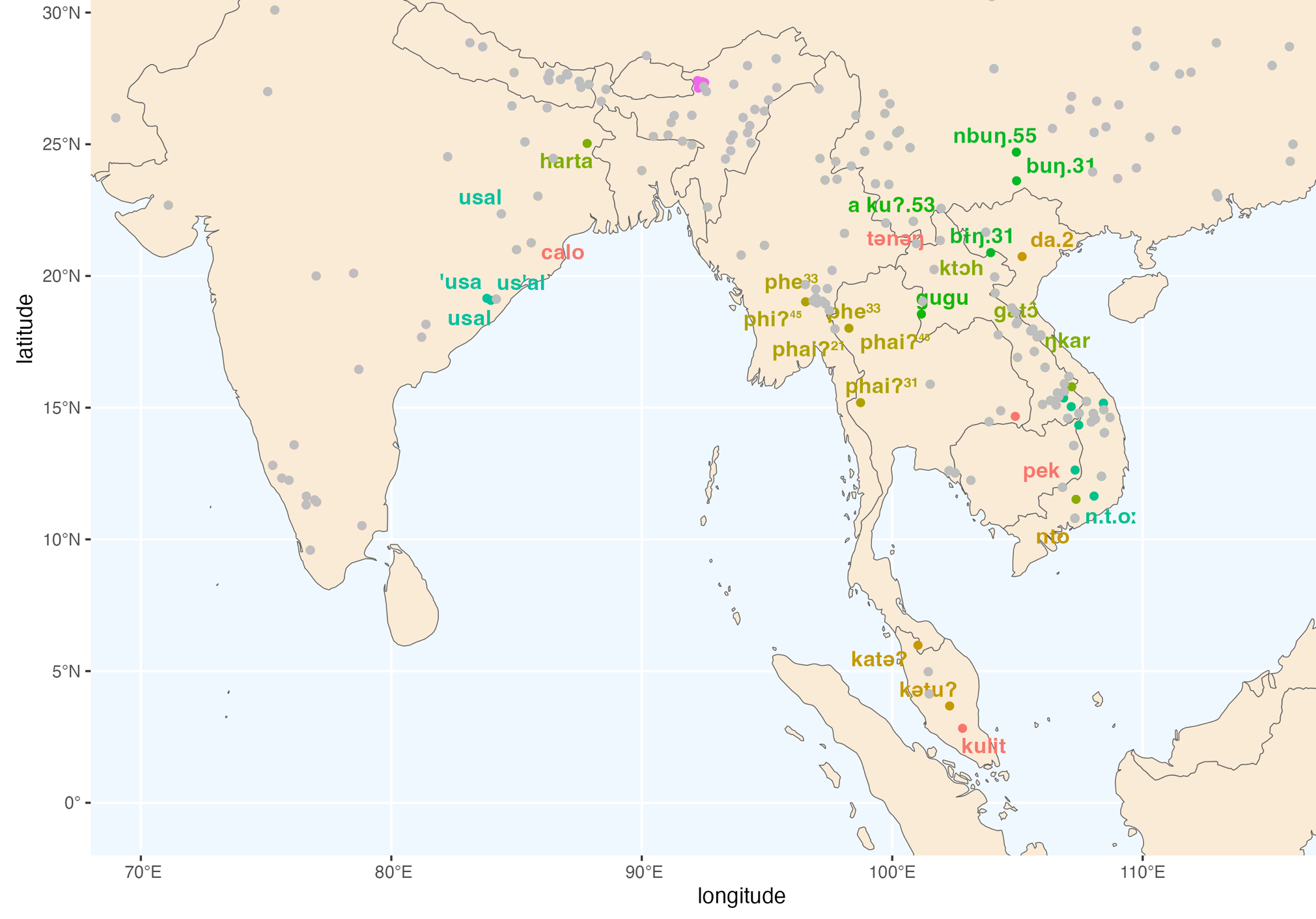Do different parts of the world have their own basic conceptual patterns?

Image: A cluster of words in South East Asia that all mean both SKIN (of an animal or human) and BARK (of a tree). Many of the words are historically unrelated, but they may reflect a shared regional conceptualisation of SKIN and BARK.
We tend to think of basic concepts like HAND, DOG or SUN as self-evident, universal elements of the human experience. But learning about languages from different parts of the world suggests otherwise. There are languages in Australia and the Amazon where DOG and CAT are viewed as a single concept, expressed by the same word, and indeed we only need to travel across Europe to find languages where HAND and ARM are a single concept.
Prof John Mansfield of the the Institute for the the Interdisciplinary Study of Language Evolution has just been awarded funding from the Swiss National Science Foundation to systematically study this phenomenon. A team of researchers at the institute will study how conceptual patterns cluster into geographic regions, potentially revealing patterns of thought that have been transmitted across communities over thousands of years. The team looks forward to sharing new insights on the diversity of word meanings, and connecting this topic to the fields of anthropology, archaeology and genetics.